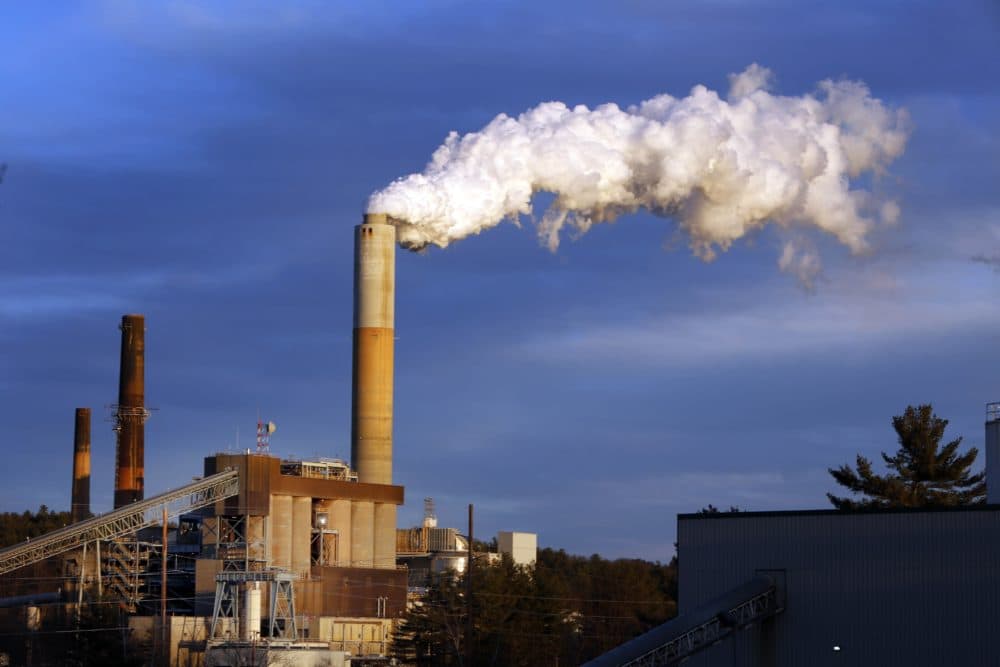Advertisement
Regional Emissions Pact Has Big Health Benefits For Kids, Study Finds

A regional plan to reduce greenhouse gas emissions from power plants also made the northeast healthier, by reducing air pollutants like mercury and sulfur dioxide.
But a new study focused on children found the benefits were even greater than previously thought, preventing hundreds of childhood illnesses and saving an additional hundreds of millions of dollars.
The findings were published in the journal Environmental Health Perspectives.
“What makes this study particularly important is that it shows how we have so absurdly undervalued the welfare of our children in how we approach our public policies,” said Aaron Bernstein, interim director of the Center for Climate, Health and Global Environment at the Harvard T.H. Chan School of Public Health and a pediatrician at Boston Children's Hospital. Bernstein was not involved with the study. “We really have a lot to gain by fully accounting for what air pollution and other forms of pollution do to children.”
The Regional Greenhouse Gas Initiative – or RGGI – was the first regional cap-and-trade plan of its kind in the country. It started up in 2009, and now involves nine states, including Massachusetts.
"We really have a lot to gain by fully accounting for what air pollution and other forms of pollution do to children."
Aaron Bernstein
A 2017 study by Abt Associates looked at the heath impacts for the first five years of the program, from 2009-2014. The Abt study mostly focused on adult health, looking at things like heart attacks, hospitalizations and lost days of work, though it also took infant mortality, children's acute bronchitis, and some other respiratory symptoms into account. The 2017 study found that the health benefits of RGGI were worth somewhere between $3 and $8.3 billion; within that, the health benefits to children were worth about $8.1 million.
Environmental scientist Frederica Perera, who runs the translational research program at Columbia University’s Center for Children’s Environmental Health, wanted to take the analysis a step further, updating the 2017 study by looking at additional health effects on developing fetuses and young children, who are especially sensitive to air pollution.
“We felt it was very important to include the outcomes that were associated with the pollutants that had been largely ignored,” Perera said. “Because the long-term health benefits would be so great if we could prevent these very early damages from occurring.”
Advertisement
Bernstein said research shows the long-term effects of pollutants can span a lifetime — and begin very early: “Increasingly, we realize that harms to children from pollution can start even before children are born."
Perera and her colleagues focused on concentrations of airborne particulate matter, and how regional changes in that pollutant likely influenced the rates of preterm births, asthma, low birthweight and autism spectrum disorder (ASD). She found that RGGI offered significant health benefits, estimating that between 2009-2014, RGGI helped the northeast avoid about 537 cases of childhood asthma, 112 preterm births, 98 cases of ASD and 56 cases of at-term low birth weight.
Perera estimated the cost savings from these avoided childhood illnesses to be between $191 and $350 million – the wide range is due to the many different possible severities of illnesses and outcomes. Regardless, she said, it’s likely an underestimate.
“The cost estimates are conservative,” she said. That's because severe diseases children “play out over their entire lifetimes, and they affect not just the child, but the families.”
One limitation of the study, she noted, was that the data were not detailed enough to make conclusions about particular neighborhoods, or racial or socio-economic groups, that could have different exposures air pollution.
“Low-income communities of color are most affected by air pollution,” said Perera, adding that her team has further studies underway to examine whether public policies adequately address disparities in pollution exposure and health outcomes.
“We hope very much that this will spur other such assessments of climate policies in the U.S. and around the world,” she said, “to pay more attention to this vulnerable population.”
[Editor's note: The original version of this story incorrectly reported that the 2017 Abt study encompassed the years 2009-2016. The correct years are 2009-2014. We regret the error.]
This article was originally published on July 29, 2020.
